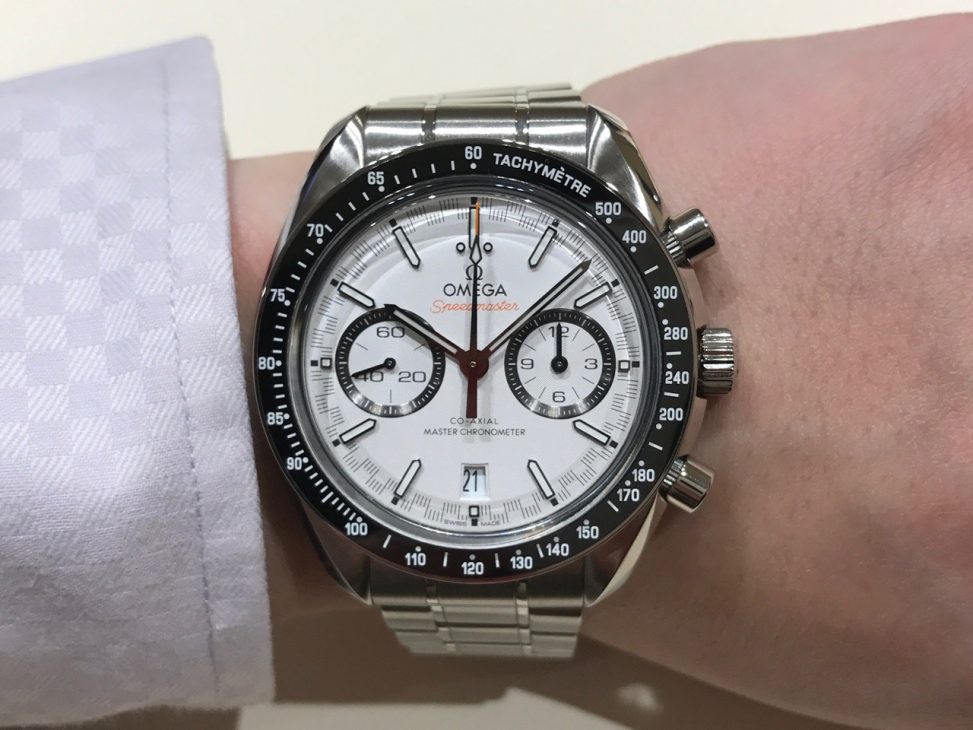

Here again, Omega, with support from its parent company, the Swatch Group, has spared no effort in developmental work. Furthermore, the engravings on the bridges and rotors are filled with red lacquer.Īlso not to be overlooked: all of the above-mentioned technologies and decorations are housed in a very neatly crafted stainless-steel case with a ceramic bezel and two curved sapphire crystals, and the entire ensemble retails for just $8,450. These flat parts are held in place by blackened screws that match the colour of the balance and the two barrels, which are visible along the periphery of the movement. The rotor, as well as the bridges on the back side of the movement, are not only plated with rhodium, but also are engraved with a special decorative pattern called “côtes de Genève en arabesque.” Moreover, the bridges have beveled and polished edges. And the use of exclusively anti-magnetic materials assures that this caliber remains blithely unimpressed by all the magnetic fields that can occur in daily life.Įver since the introduction of the manufacture line in 2007, Omega has followed its own special paths with the decorations, thus assuring that its calibers prove their exceptional status at first glance. It runs with low wear thanks to a silicon hairspring, DLC-coated barrels, a newly calculated tooth system on the gears, special lubricants, and a rotor that glides atop ceramic bearings. Two serially switched barrels keep this movement running for 60 consecutive hours without a transfusion of fresh energy.

It runs extremely precisely thanks to Omega’s own coaxial escapement, which has an especially complex shaped lever and escape wheel. Indeed, manufacture chronograph Caliber 9900 offers so many technical advantages that it’s not easy to summarise them all. “Master Chronometer,” the final words in this model’s name, stands for an Omega movement of the latest generation that combines various quality features and certificates. The brand revived the Mark II in 2014, followed in 2017 by the Speedmaster Racing Master Chronometer that we scrutinised in this test. They became famous in 1969, the year of the first moon landing, when Omega unveiled the Mark II as a modern development of the Speedmaster. These “Racing Dials” with bicolour markers to show fractions of a second first appeared on an Omega model in 1968.

The Speedmaster Racing that we tested comes with a distinctive minutes circle along the edge of the dial, inspired by the checkered flags used to signal the end of a race. In 1964, the distinctive twisted lugs where introduced, which allowed for an asymmetric case that in turn protects the crown and pushers.The Omega Speedmaster Racing Master Chronometer, may not have been on the moon, but it is nevertheless a thoroughly convincing watch: its sporty yet elegant design offers excitement without being polarising its components are of high quality without unduly raising the price and its movement’s technology can be described as ingenious. This watch was strapped to astronaut Ed White when he made his spacewalk on June 3, 1965, and featuring its simplified calibre 861 was worn by Neil Armstrong and Buzz Aldrin when they took their giant leaps on the lunar surface in 1969. In 1963, the third generation was the first watch to pass NASA’s strict testing and was worn on Gemini and Apollo missions. Like its predecessor, it featured the highly collectable Calibre 321 movement. It was also the first to be worn in space on the wrist of Walter Schirra on October 3, 1962. Two years later, a second version was released with a black aluminium bezel, lollipop seconds hands for Air Force orders and 'Alpha' style hour and minute hands for better legibility. However, when it comes to speed, I’m sure there’s nothing quite as exhilarating as jetting off to the moon. It is not only one of the most iconic chronographs, it was the first chronograph wristwatch with its tachymeter scale engraved on the bezel - a feature designed for the benefit of racing drivers. The original Speedmaster 'Broad Arrow' was created in 1957 and was so named because of its distinctive hands.


 0 kommentar(er)
0 kommentar(er)
